8 must-have photography catalogues for photographers
If you want to become a professional photographer and make a living out of it, it’s important to study the greats and these 8 photography catalogues helped me a lot in my early days.

Contenido
- 8 photography catalogues that changed my vision
- Vices
- 1# Sumo by Helmut Newton
- 2# A Different Vision On Fashion Photography by Peter Lindbergh
- 3# Beneath The Roses by Gregory Crewdson
- 4# The Americans by Robert Frank
- 5# Vivian Maier
- 6# Hidden Spain by Cristina García Rodero
- 7# Fullmoon by Darren Almond
- 8# Expanding Universe. The Hubble Space Telescope
- Must-have photography catalogues that can change your vision
- Arcadina goes with you
8 photography catalogues that changed my vision
These are the 8 photography catalogues that I want to talk about today and that changed my vision completely.
- Sumo.
- A Different Vision On Fashion Photography.
- Beneath The Roses.
- The Americans.
- Vivian Maier.
- Hidden Spain.
- Fullmoon.
- Expanding Universe.
Vices
When I started to make a living with my first photographic assignments, more than 25 years ago, I had two clear “vices'”. Music and photography catalogues. At that time I had not yet set up my first studio and was therefore not yet aware of the meaning of “living to pay”.
My only investments were records and photography catalogues. And the truth is that I didn’t consider aspiring to much more. I was happy with so little or… with so much, depending on how you look at it. In fact, when I mentally recall some passages of my former youth, I can still clearly relive that almost orgasmic sensation of tearing off the plastic wrapping and discovering the inside design of a Mike Oldfield or Wim Mertens CD. Or the photographs in a catalogue by Duane Michals, Jan Saudek or Helmut Newton.
Normally, this scene used to take place on a train home. After liquidating a large part of my income in the music shops and bookshops of the capital and I think my ecstasy was more than evident because when I looked around it was not unusual to come across someone looking at me as if I were Gollum himself, engrossed with his “treasure”.
What has happened to the pleasures of life?
These are pleasures that have almost disappeared from my life today. Not because I can’t do what I used to do, but because the sensations are nowhere near the same.
With music, I have long since subscribed to an online platform from which I have access to everything I want to listen to and that now would be impossible for me to find published in any physical format. I have quite particular musical tastes and if before it was already difficult for me to get hold of some records in CD format, now it is practically unfeasible outside the Internet channels.
I could say that thanks to online platforms I now “swim in abundance” in terms of my desired music, but undoubtedly that same abundance, in which everything is available, has also lost the charm of that process that consisted of listening to a tune on the radio, becoming obsessed with it, searching for it, discovering the record and its author, getting on a train and wandering the music shops of the city until you find the object of your desire and returning with the prize and the satisfaction of having successfully completed a vital mission.

My first photography catalogues
With photography books and catalogues there is still a lot of that. The best way to enjoy them is still in printed form. Therefore, the pleasure of unpacking them and discovering their contents still has something of that “craving”, even if times and oneself are different.
I used to buy them in a specialised bookshop, such as Librería Railowsky in Valencia (Spain). A veteran bookshop that is still in business and now sells online. You could also spend a good afternoon in the book section of the FNAC, leisurely browsing through copies before making your choice, although its cultural vocation has waned considerably over the years.
Now, without a doubt, the Internet is the best option for accessing these photography catalogues, either through the large online sales platforms, or through other more modest ones (bookshops, publishers…) where you can find some gems originally published anywhere in the world. Not to mention the second-hand market, where you can get some out-of-stock and well-preserved editions, although too often at exorbitant prices, especially if they are limited, special editions or form part of the exquisite group of legendary publications on photography.
The best way for a photographer to learn to look is to investigate the language of photography, which is by no means a straight line. Technique can be acquired and practised with greater or lesser skill, but the gaze, even if some have an innate gift, is exercised by discovering what the gaze of “others” is like.
The gaze of others
Yes, the best way for a photographer to learn to look is to investigate the language of photography, which is by no means a straight line. Technique can be acquired and practised with greater or lesser skill, but the gaze, even if some have an innate gift, is exercised by discovering what the gaze of “others” is like. Each with their own way of perceiving and understanding the photographic act and its processes.
I have learnt to look at the work of my true influencers: Duane Michals, Chema Madoz, Helmut Newton, Erwin Olaf, etc. But also, thanks to their published photography catalogues, I have learned a lot about the laborious process of selecting and transferring the photographic work of an author to a publishing project, with its formats, its design and layout and its quality of reproduction with respect to the original images.
Some publications can become works of art in their own right and a coveted collector’s item.
So let’s take a look at a first selection of photographic catalogues. Some of them are still available mainly through online sales. Others, unfortunately, are now out of print, although their relevance makes them well worth a review. Without forgetting some of those publications that have made exclusivity their main attraction, only available to people with a certain purchasing power (which is not my case, even if it weighs on me…).
1# Sumo by Helmut Newton
And we begin with the titan of published photography catalogues. And the word titan is not meant figuratively, because acquiring one of the 10,000 copies of Sumo published in its limited edition was practically like taking home a private bound exhibition. Not only because of the set of works, but above all because of their size, printed with quality standards befitting an original piece of art.
Taschen publishers
We are talking about the feat (and extravagance) of the publishing house Taschen which in 1999 broke all imaginable records with the publication of this legendary photographic retrospective of Helmut Newton on 464 pages in 50 x 70 cm format, including a lectern designed by Philippe Starck himself. This is perfectly understandable, not only because of the size of the book in question, but also because each copy weighs 35 kilos.
All this for the modest price, according to the publisher’s own website review, of 17,500 €, earning it on its own merits as the most expensive book published in the 20th century.
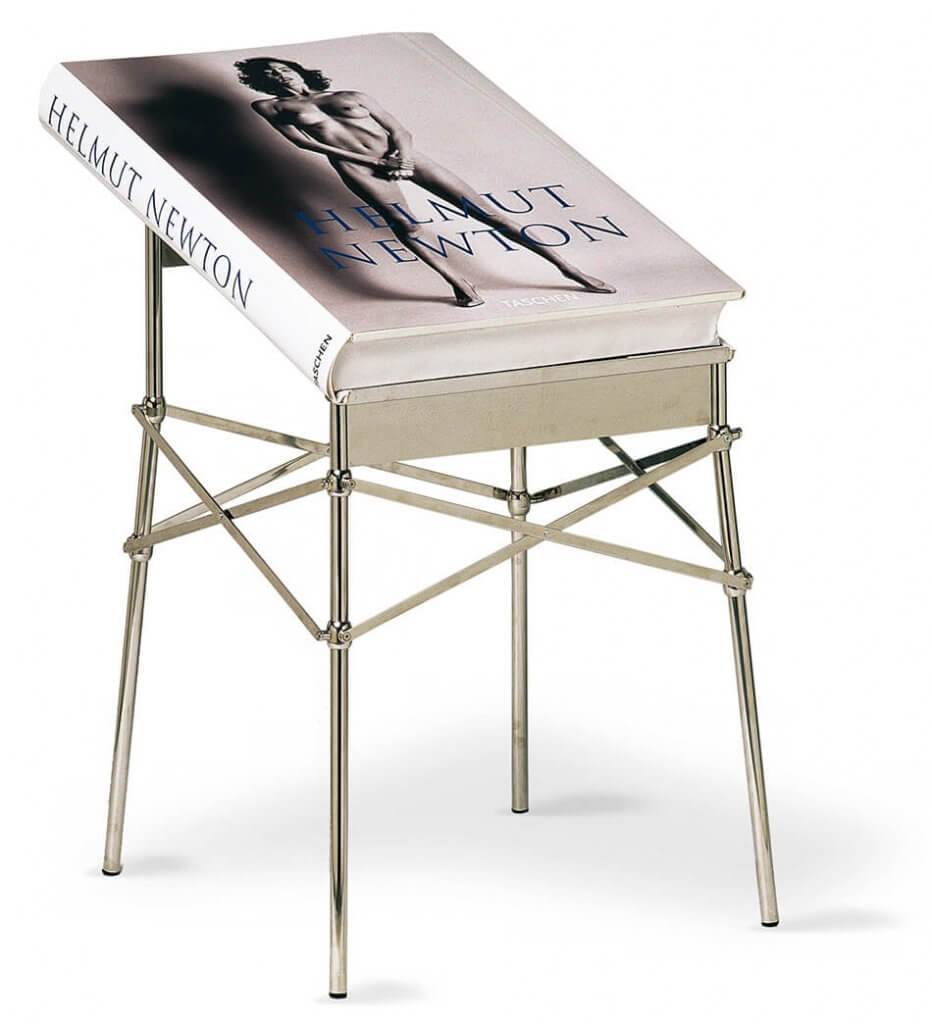
The bad news is that, if you’re short on cash and feel like expanding your home furnishings with such an investment, Taschen sold out of this item years ago. In fact, the 10,000 copies of Sumo flew out in a short time after its first edition.
The good news is that, for the rest of us, there is now the low cost 20th anniversary edition of the original publication, in a less pretentious format (27×38 cm) and at a much more earthly price of 100 € (even less with some online offers).
This reprint contains the same content as originally published, with its 464 pages, revised and updated by June Newton, Helmut Newton’s wife until his death in 2004. It is complemented by the making of the original Sumo project.
Moreover, we are talking about the Taschen publishing house, synonymous with exquisiteness and maximum quality in all its publishing projects, whether in normal or tabletop size.

The work of Helmut Newton
For those of you who are not familiar with the work of Helmut Newton (that’s enough), we are talking about one of the totems of 20th century photography and of any future time by extension.
His influence on fashion photography and portraiture is indisputable, but it was undoubtedly his photographs of female nudes that marked a before and after in this genre. In them he combined glamour, eroticism, beauty and a certain amount of voyeurism. Sometimes at the limits of the sexual stereotype of women, something that may prevent more than one person from understanding and contextualising his contribution to the world of photography in these times if they do not do so with a broad vision and a good knowledge of the photographer’s entire oeuvre.
Newton would probably come out today with that famous line of his: “Look, I’m not an intellectual, I just take pictures”.
And if you don’t have enough with Sumo‘s photography catalogue, here is a bonus track to complete his retrospective on your bookshelf (if you can fit it) with his snapshots shot in Polaroid system.
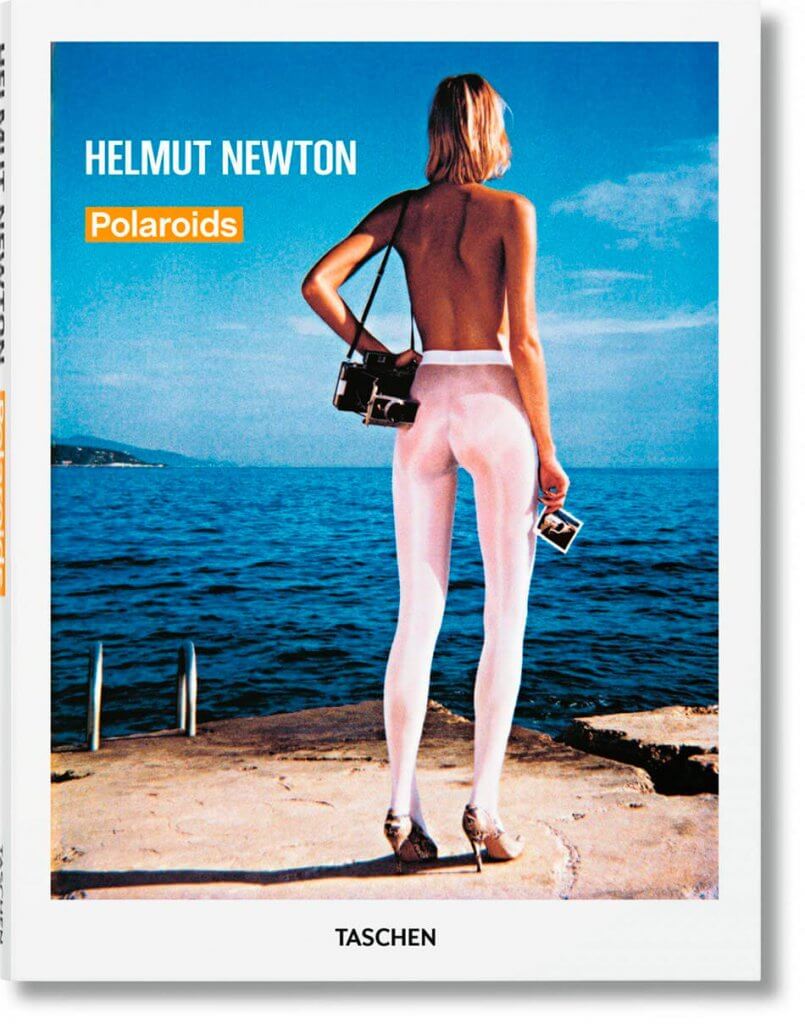
2# A Different Vision On Fashion Photography by Peter Lindbergh
Continuing with the same editorial, we go to another essential photography catalogue that also revolutionised the codes of fashion photography and is considered to be the architect of the supermodel phenomenon of the early 90s.
I am talking about Peter Lindbergh and the almost 500 pages of the A Different Vision On Fashion Photography catalogue. Again with the indisputable quality and exquisite taste that characterise Taschen publications.
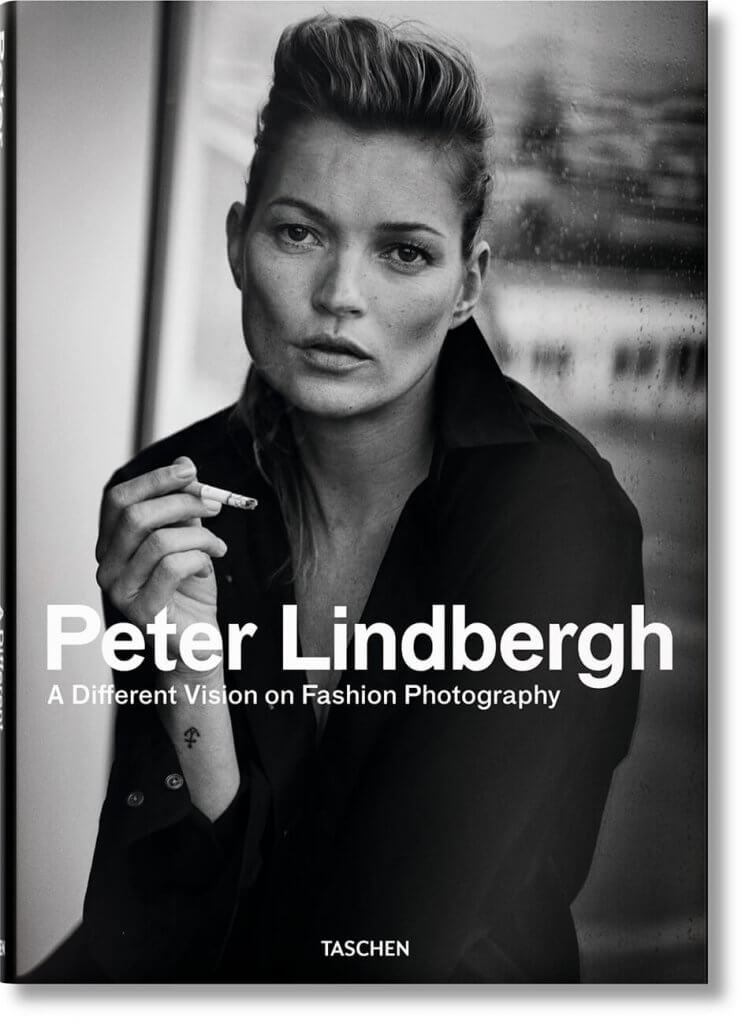
Peter Lindbergh took up photography late, in his thirties, and in his early years as a photographer for Stern magazine he coincided with Helmut Newton.
But it was in Paris where he gained worldwide recognition, standing out for his particular conception of fashion photography, almost always in black and white and with aesthetic codes typical of documentary. Far removed from any style of that period (early 1980s).
His visual language, full of naturalness and intimacy, captivated the most prestigious fashion brands, making Lindbergh one of the most sought-after photographers, despite the fact that in his images fashion was always a pretext and rarely the focus of attention.
Lindbergh and Vogue
Lindbergh took the cover photograph for the January 1990 issue of British Vogue, for which he chose five emerging models, almost unknown at the time, and photographed them in the middle of a New York street. Virtually without make-up and looking at the camera in a simple way as any group of young women might pose at a get-together with friends.
Their names: Naomi Campbell, Linda Evangelista, Tatjana Patitz, Christy Turlington and Cindy Crawford.
That photograph became a true icon that revolutionised the concept of beauty in the fashion world and gave rise to the controversial phenomenon of the supermodels of the 1990s. They ceased to be considered mere “mannequins” and acquired a rock star-like prominence, even eclipsing the very brands for which they posed or paraded.

A Different Vision On Fashion Photography is an extensive and comprehensive survey of the work of one of the great figures of modern photography, who died unexpectedly in September 2019 at the age of 74. Practically with camera in hand and in full swing, while preparing his first self-curated photographic exhibition in the Museum Kunstpalast Düsseldorf, in his native Germany.
It is precisely from this exhibition that the publication, posthumously, of another fantastic and recommendable catalogue from the Taschen publishing house has arisen: Untold Stories.
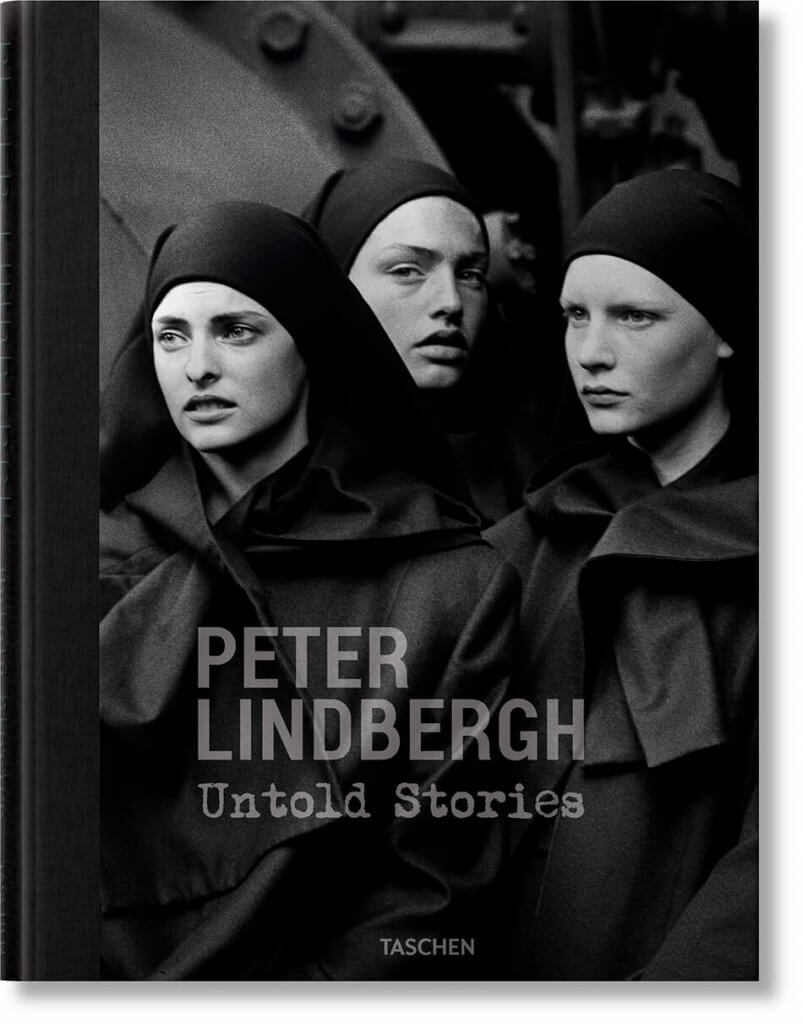
Taschen is currently preparing a new edition of the photography catalogue A Different Vision On Fashion Photography under the new title Peter Lindbergh. On Fashion Photography.
3# Beneath The Roses by Gregory Crewdson
I discovered Gregory Crewdson’s work in the fantastic exhibition dedicated to urban life, Lost in the City, held by IVAM in Valencia in the summer of 2016.
The first thing that caught my attention in his photographs was to recognise in them some well-known actors such as Julianne Moore, William H. Macy or Tilda Swinton in images that looked like individual stills taken from any American film. Those images belonged to the Dream House collection, which has been published in book format and also in individual prints. All of them in limited editions that are difficult to find at the moment, and in the case that they are, they are always exported from the USA and the costs, both for the product and the shipping, are quite high.
Beneath The Roses
Fortunately, this is not the case with the Beneath The Roses photography catalogue, published by the American publisher Abrams Books in 2008 and also with excellent print quality and photographic reproduction. This catalogue is currently available for around €60 through online sales. And while not as extensive as those of Taschen mentioned above, its images can be enjoyed in an appreciable 41 x 30 cm format.
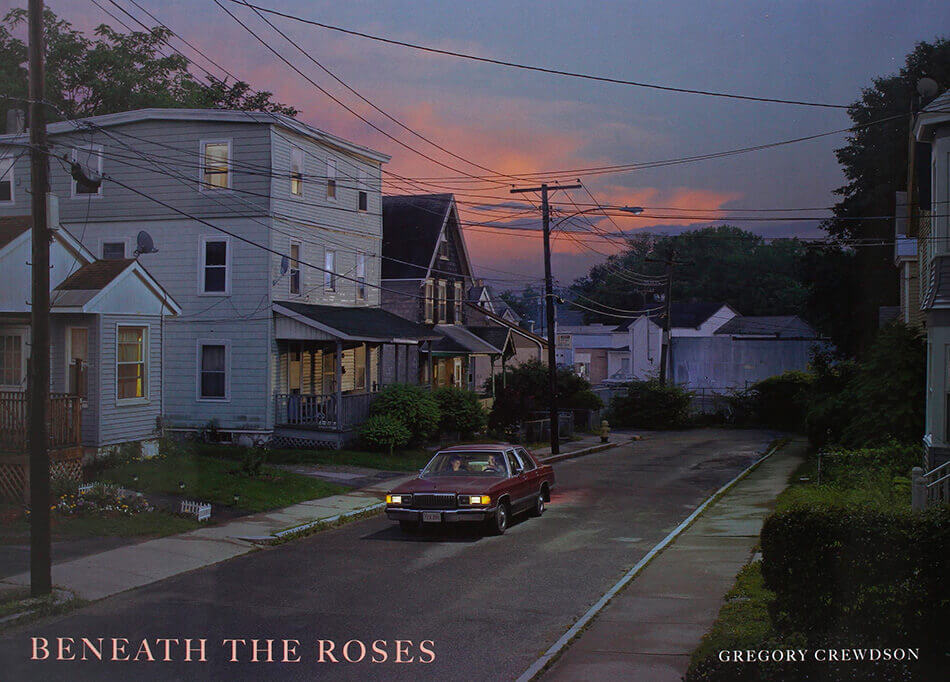
The production of each Crewdson photograph is similar to a film shoot, using practically the same lighting processes and resources used in cinema. Both in small spaces and on real open sets, for which he always has a large team of people and technicians, turning entire streets into real film sets.
However, Gregory Crewdson’s final photographs, despite the spectacular nature of their gestation, show their protagonists immersed in a disturbing loneliness and confusion. Lost in the midst of desolate urban landscapes, empty and darkened streets, or everyday interior rooms that further accentuate the human fragility of those who inhabit them.
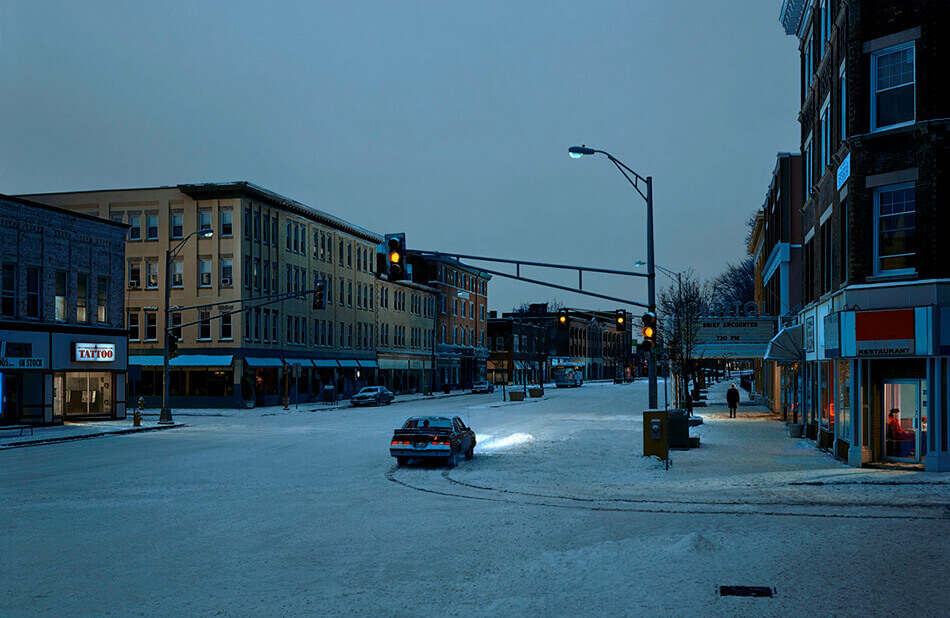
Meticulously choreographed photographs
In the Beneath The Roses photography catalogue, each photograph is meticulously choreographed. In it we find vast urban landscapes in which we can discover the apparently normal lives of the different inhabitants that populate them.
There are windows in the foreground or in the distance of the scene that invite us to imagine the story of the people seen through them. There are cars stopped in the middle of a lonely road, or in front of an empty supermarket, in which we discover their occupants in ambiguous situations that provoke a disturbing need to know what is going on in those spaces.
It is as if by viewing each image in the photography catalogue we become voyeurs behind our own window or in the undergrowth of an abandoned lot, witnessing an external reality that is both tremendously unsettling and at the same time captivating.
But the climax of the work comes in the scenes of the photographic catalogue in which the author allows us to literally enter this human microcosm of which we only see a part from the outside. Because the interior is even more overwhelming and everyday life becomes a hieroglyphic that we must solve, paying attention to every reflection in the mirror, to every half-open door, to every dimly lit room. Because each part of the image is essential to understand or imagine the whole.
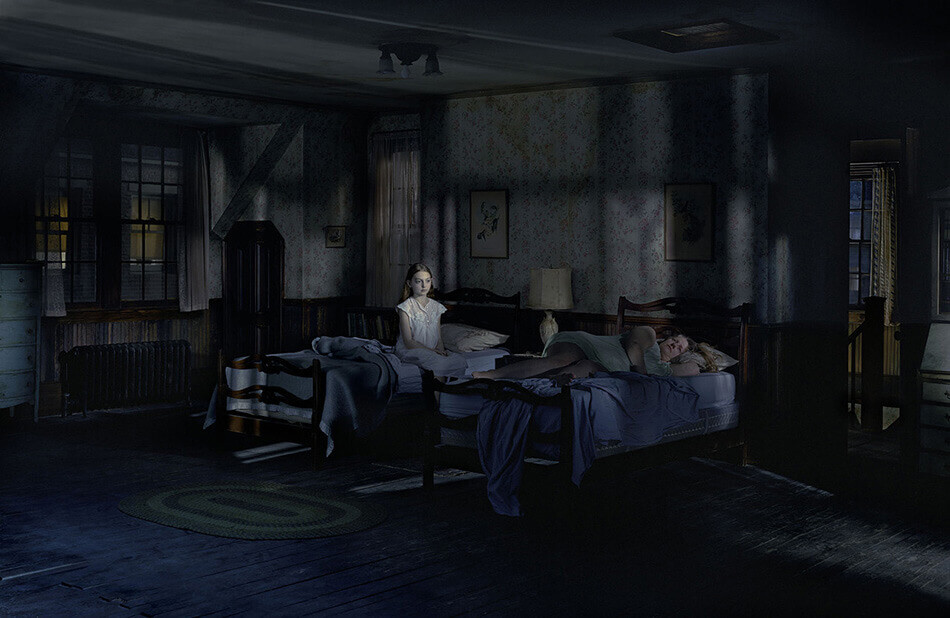
4# The Americans by Robert Frank
September 2019 was undoubtedly a dark month for the world of photography. On 3 September Peter Lindbergh died unexpectedly and six days later, at the age of 94, one of the living legends of photography until then, Robert Frank, left us. A key figure in 20th century photojournalism and author of one of the fundamental photography catalogues on any photography lover’s bookshelf: The Americans.
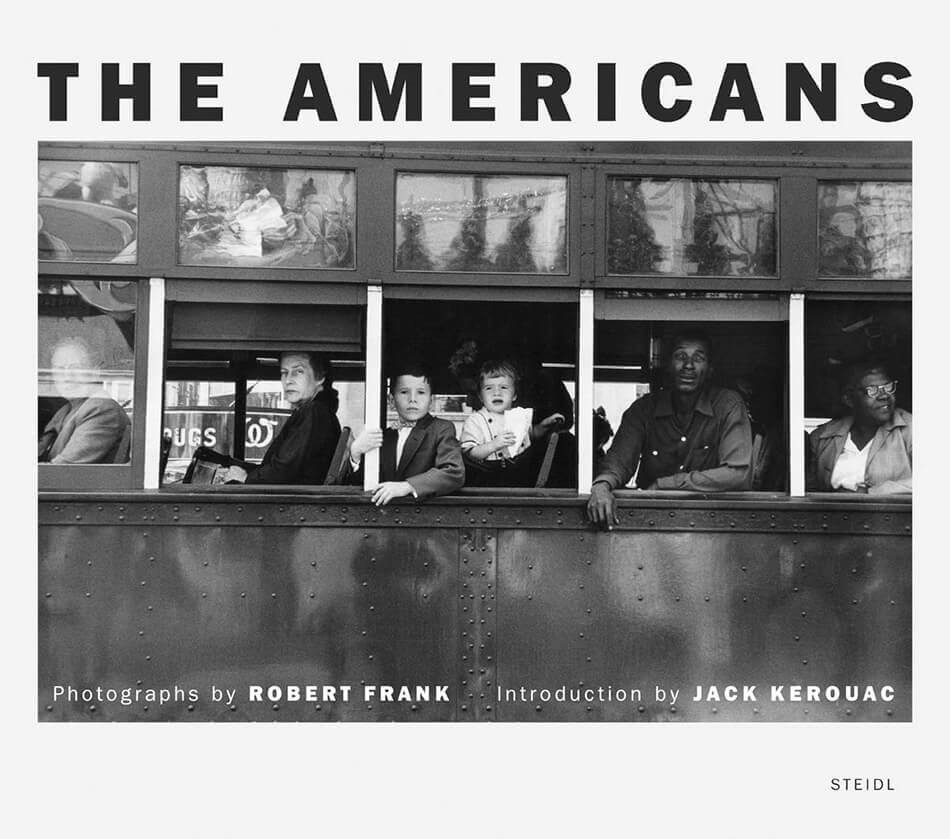
Robert Frank
By 1955, Robert Frank had achieved a certain recognition as a photographer, having emigrated from Switzerland to the USA in 1947. Frank was initially fascinated by the country that had welcomed him and this led him, under the auspices of one of his greatest influences, the photographer Walker Evans, to apply for a fellowship at the John Simon Guggenheim Memorial Foundation.
The proposal of his application is to travel all over the United States, camera in hand, and make a kind of visual report of American society and its customs. Seen from the perspective of an immigrant who is practically unaware of the complex idiosyncrasies of his huge new country. This frees him from any prejudice when it comes to capturing the reality (or realities) of what he encounters along the way.
Once the grant is awarded, Frank gets an old Ford Business Coupe, a few cameras and a lot of film and starts his own road movie that takes him to more than 40 states over the course of a year and a half.
But what he finally captures with his cameras has little to do with the American dream. What he finds is a country of significant contrasts. With shocking class differences between rich America and poor America, almost Third Worldist, and with the long shadow of racism present at all times. “A sad poem of America captured in photographs” in the words of writer Jack Kerouac.
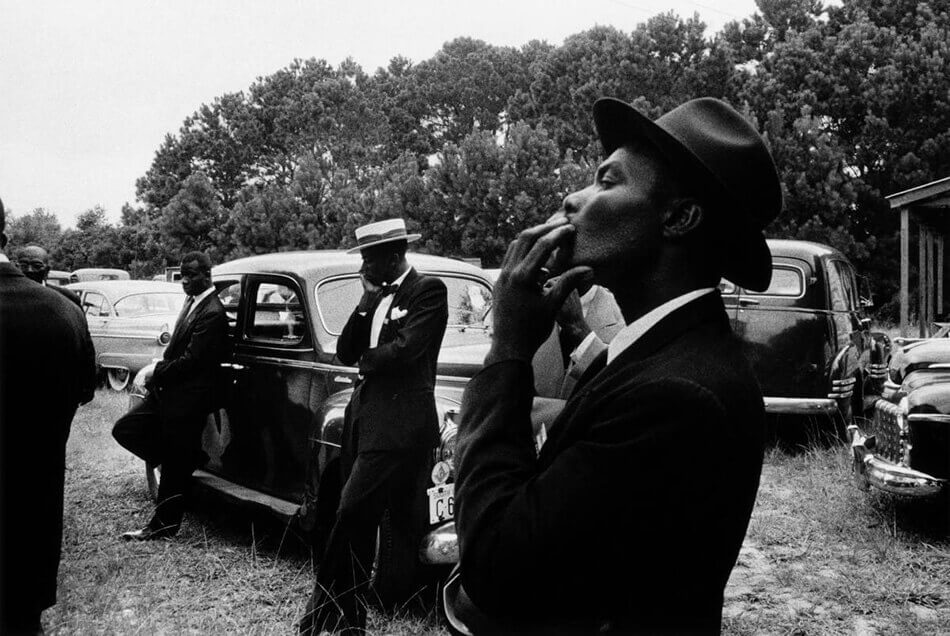
2 years of his life selected photographs
The final result of the photographic catalogue was more than 28,000 snapshots, which led Robert Frank to spend almost two years of his life selecting the 80 or so photographs that were finally published.
But the America portrayed by Frank was so stark and sad that few American publishers were willing to publish the project, and finally, the first edition of The Americans was published in France under the title Les Américains, including texts by illustrious intellectuals of the time such as Henry Miller, Simone de Beavoir, John Steinbeck and William Faulkner.
It was not until 1959 that the book was published as we know it today. Grove Press was responsible for the first edition of The Americans in the United States, in which the original texts of the French edition were eliminated, due to their “un-American” tone. These were replaced by an introduction by Jack Kerouac, which helped to boost sales of a catalogue that initially received a lukewarm reception from the public and reaped more than one fierce attack from the American specialised press.
All this led Robert Frank to distance himself from his early fascination with his adopted America, and from then on he was highly critical of a society obsessed with a “dream” that in reality turned out to be a veil to keep him from being aware of his loneliness, fear and confusion.
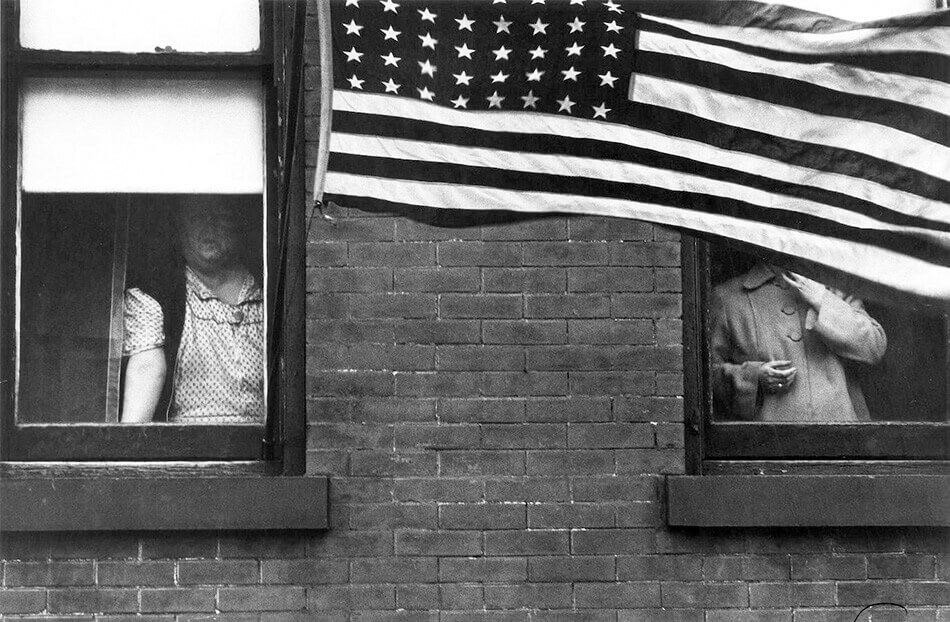
The Americans photography catalogue is now available for sale online, in a publisher’s edition, in 21 x 18 cm format and for around 35 €, a more than reasonable price for one of the legendary publications in the history of photography. Steidl The Americans is now available online, in a 21 x 18 cm format and for around 35 €, a very reasonable price for one of the legendary publications in the history of photography.
5# Vivian Maier
The story of Vivian Maier is undoubtedly one of the most surprising photographic events of the last century. The posthumous discovery of an unknown artist who practically concealed her vocation as a photographer and a talent to which she may never have given any importance. This discovery was unearthed and elevated after her death by simple coincidences of life.
In 2007, a young historian named John Maloof was conducting research based in Chicago’s Portage Park neighbourhood with the idea of publishing an illustrated book, when he came across several belongings at an auction house that had been abandoned in a storage locker.
Among all that material, a number of undeveloped rolls of film came to light that he acquired for less than $400. Maloof, after developing some of the reels and reviewing their contents, decided to discard them from his research project and made some of the images available to collectors on the Internet. It was then that the American critic and historian Allan Sekula discovered the images and contacted Maloof, surprised by their talent and historical value, giving rise to one of the most talked-about photographic discoveries of recent years.
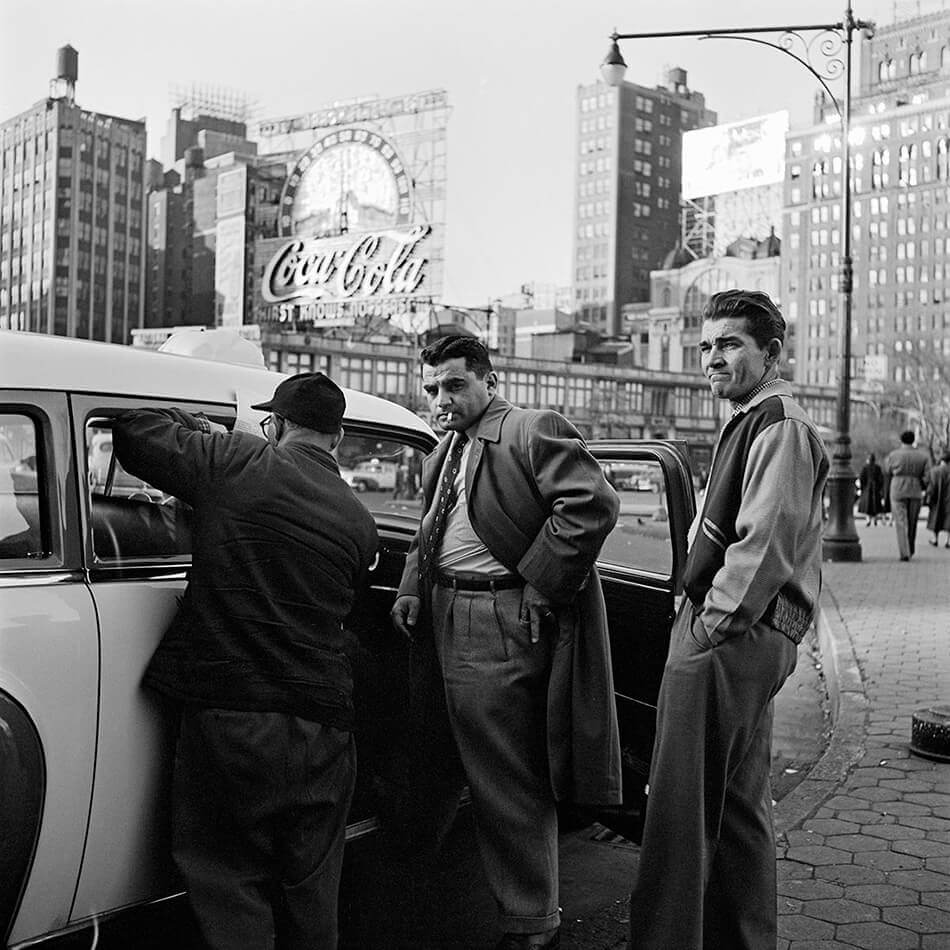
Maloof’s photographic find
Maloof, already aware of the value of that material, decided to undertake a meticulous process of research to locate the authors of those photographs taken between the 1950s and 1990s between Chicago and New York. By the time he discovered that a simple nanny named Vivian Maier, a photography enthusiast, was behind that amazing graphic material, it was too late. Mayer had already died in April 2009 in a nursing home at the age of 83, alone in total anonymity.
Maloof’s research led him to the Gensburg family, for whom Vivian had worked for almost 20 years as a nanny. Thanks to this, he was able to recover Maier’s correspondence, newspaper clippings and various rolls of film. He also located the shop where Maier used to develop his photos when he could afford to do so, which was not very often.
In total, during the course of his research he collected more than 100,000 negatives, many of them still undeveloped, which he was able to locate chronologically thanks to the fact that those developed by Vivian Maier herself were marked with the location and date on which they were taken.
Vivian Dorothy Maier
Vivian Dorothy Maier was born in New York in 1926 into an immigrant family (French mother, Austrian father). As a child she returned to France with her mother, where she lived until she decided to return to New York at the age of 25. There she began to alternate various jobs as a nanny, which enabled her to acquire a Rolleiflex medium-square format camera with which she would take almost all her black and white photographs over the next 40 years.
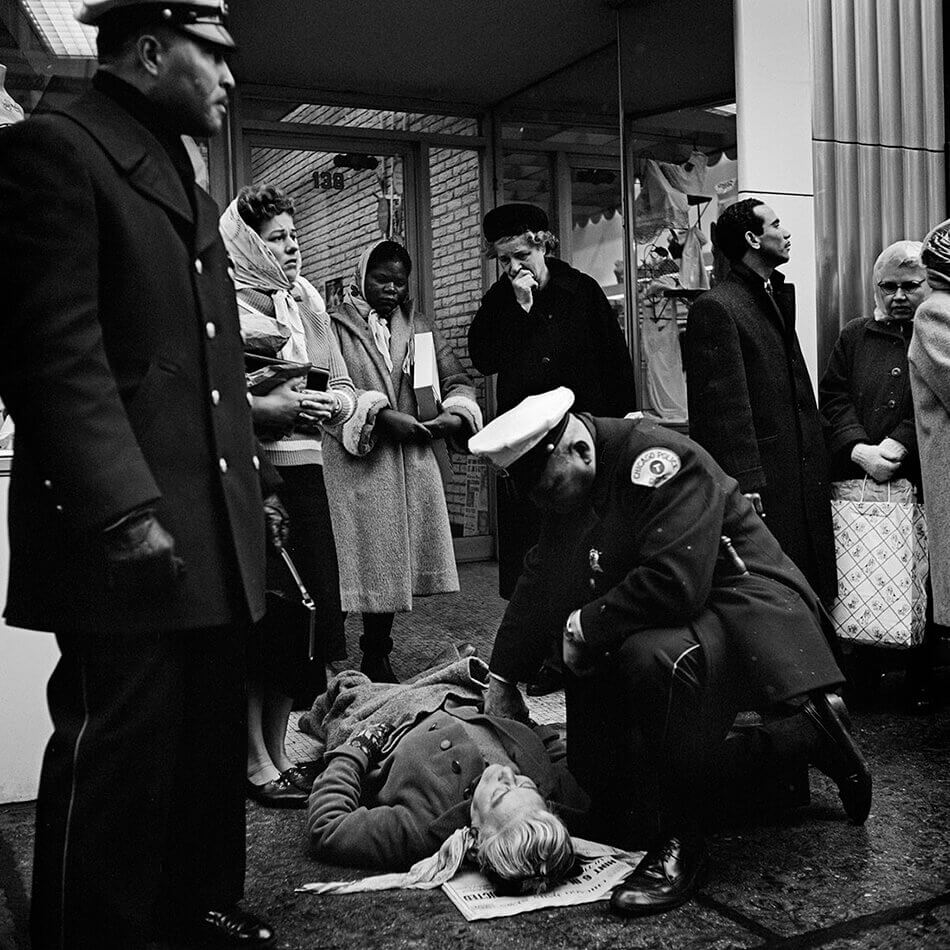
No one knows how Maier acquired his knowledge of photography, although prior to his second stay in the United States he is credited with some images taken in France with a Kodak Brownie.
It is known that in some of the houses he worked for he had a bathroom next to his room where he could set up a darkroom and develop some of his photographs. But the truth is that most of the images she took were not developed because she generally did not have enough money to afford to do so, and most of the film ended up accumulated, or even abandoned, as Maier changed families due to her work as a nanny.
Maier seemed to enjoy the photographic process more than the expectations of the result and possibly never realised its potential.
A fascinating photographic work
Vivian Maier’s photographic work has nothing to envy from that of the great photographic chroniclers of twentieth-century America. Despite the fact that she herself did not take the results of her love of photography seriously during her lifetime.
Maier seemed to enjoy the photographic process more than the expectations of the result and possibly never realised its potential. But the fact is that Maier’s photographs are of indisputable quality. Not only when it comes to choosing the framing in a format, the square, whose process with a Rolleiflex is not exactly the most ideal for practicing Street Photography. In addition, his images are resolved with a proximity and sharpness when it comes to showing the subjects photographed, which seem more typical of a meticulous photographic studio work than of a documentary work.
In Maier’s images there is no blur, no shaky pictures, no excessive grain. Everything is perfectly frozen, with all its details 100% visible. A real feat for someone who probably didn’t even stop to think about the importance of what he was doing… He was simply taking pictures…
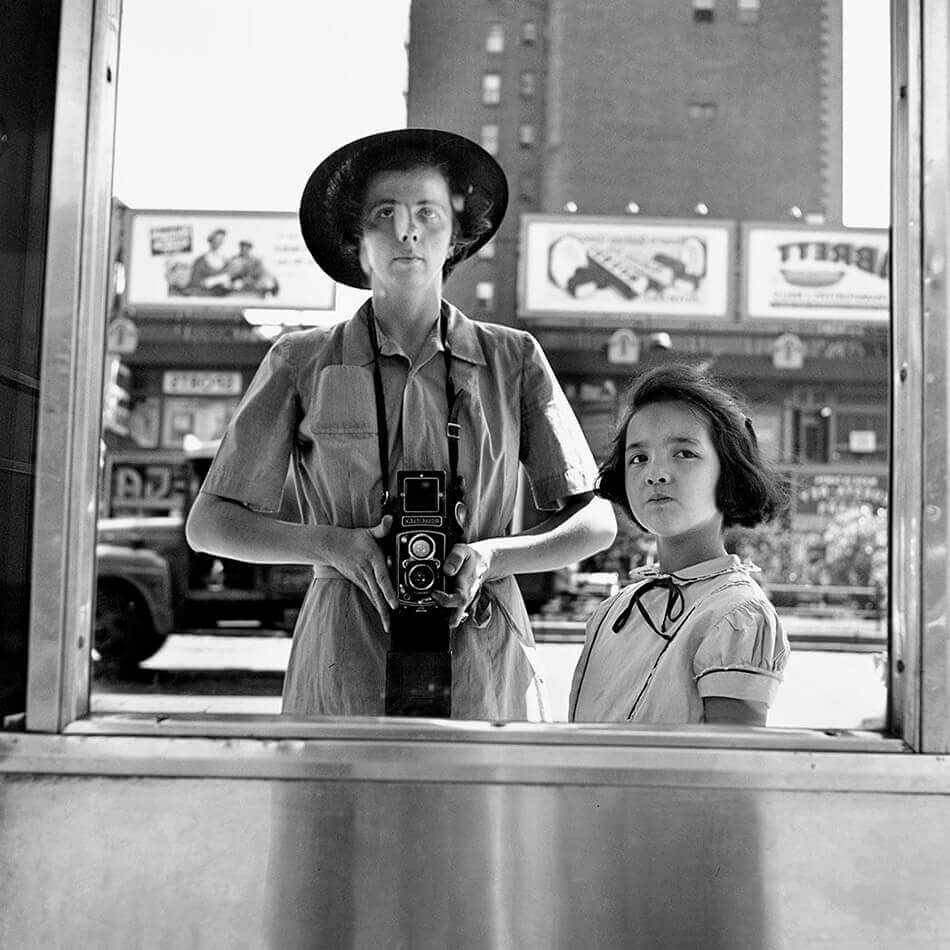
There are currently two very interesting photography catalogues available online, Vivian Maier. A Photographer Found, edited by John Maloof himself, which brings together some 250 images. Many of them previously unpublished.
And the photography catalogue Vivian Maier. The Color Work, which focuses on the photographer’s possibly lesser-known period. That of her colour photographs taken with the same Rolleiflex but also with other 35-millimetre cameras that she used to load with Kodak film. Both have been published by Harper Collins Publishers.
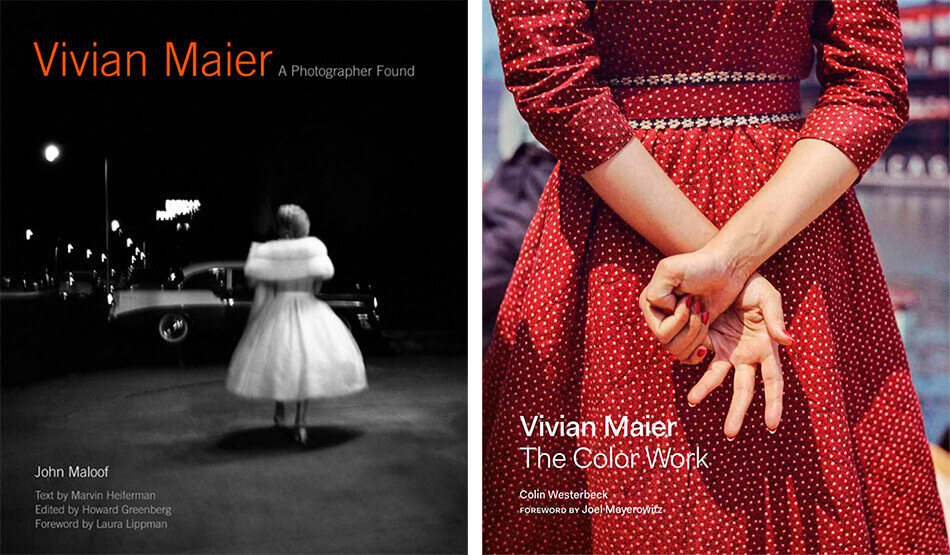
6# Hidden Spain by Cristina García Rodero
And now we come to a photography catalogue that, unfortunately, is no longer in print. Nowadays it can only be found on the second-hand market for collectors, at unaffordable prices, but due to the relevance it had at the time of its publication and the category of its author, it is considered one of the best photography catalogues published in Spain.
To speak of Cristina García Rodero is to speak of a benchmark in documentary photography. Member of the Royal Academy of Fine Arts of San Fernando and the first Spanish photographer to be part of the prestigious Magnum Agency.
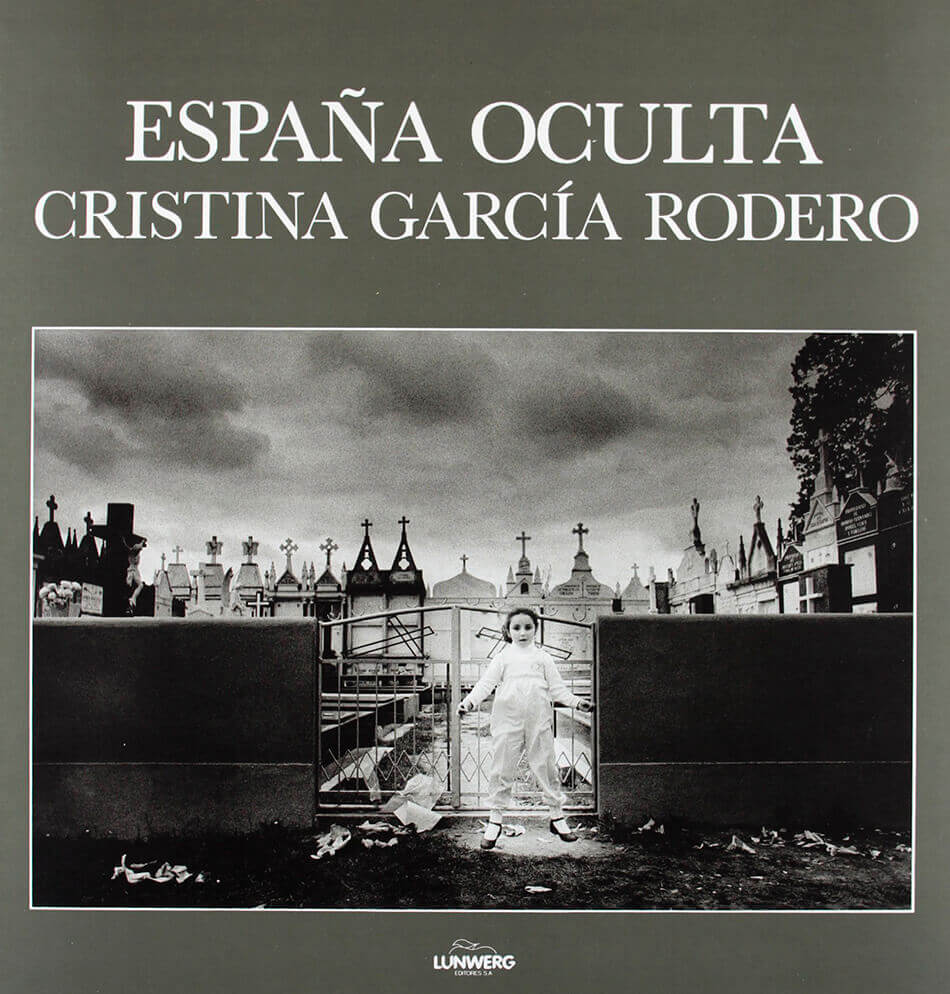
In 1989, Lunwerg published España Oculta, a book of 126 photographs by a Spanish photographer who was practically unknown at the time. Cristina García Rodero, who had received a grant from the Juan March Foundation in 1973 to carry out a photographic project.
His initial idea was to travel around Spain with his camera taking photos in general, but after witnessing some of its most peculiar customs, he decided to focus his work on popular festivals and traditions. Some of them were already disappearing in favour of the modern times that were approaching in the changing Spain of the end of the 20th century.
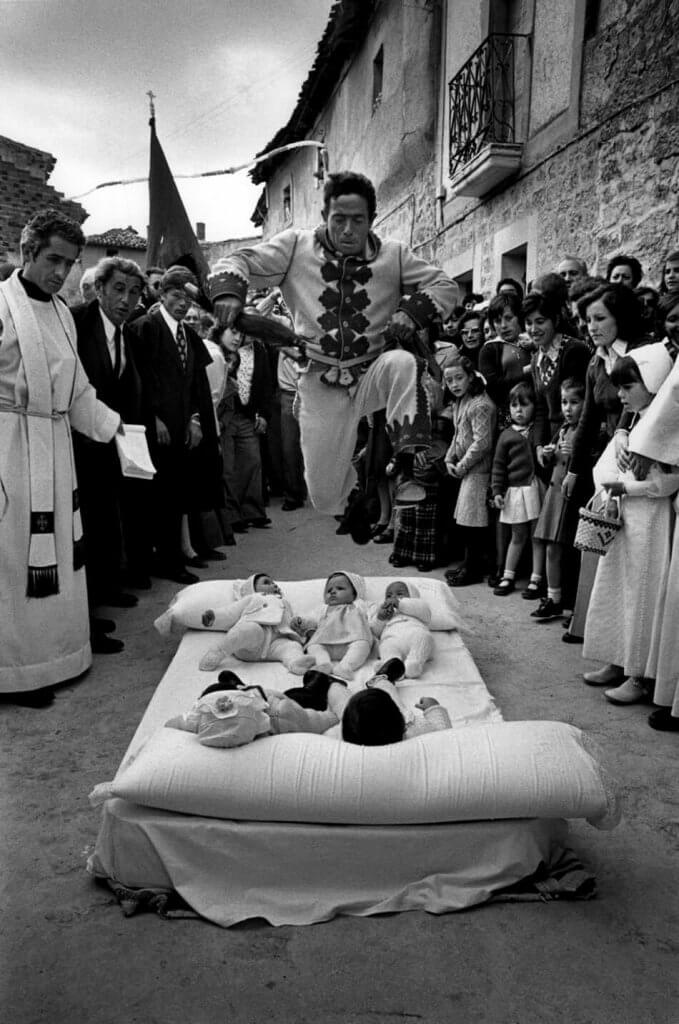
The history of a Spain from another time
I remember that when I bought this photography catalogue, back in 1993, the feeling I had as I turned the pages was that I was looking at images of a very old-fashioned Spain. As if these photographs were from very distant times.
I was unaware of the period in which they had been taken until, on checking the dates of each snapshot on the final pages, I was surprised to find that some of them were no more than 4 or 5 years old, and in general they had been taken in a range of between 10 and 15 years.
Even though I was born and lived in a rural area where it was not very difficult to find a similar picture in its traditional festivals. The impact that García Rodero’s images produced on me, while I was still very young, is something that has remained in my memory over the years.
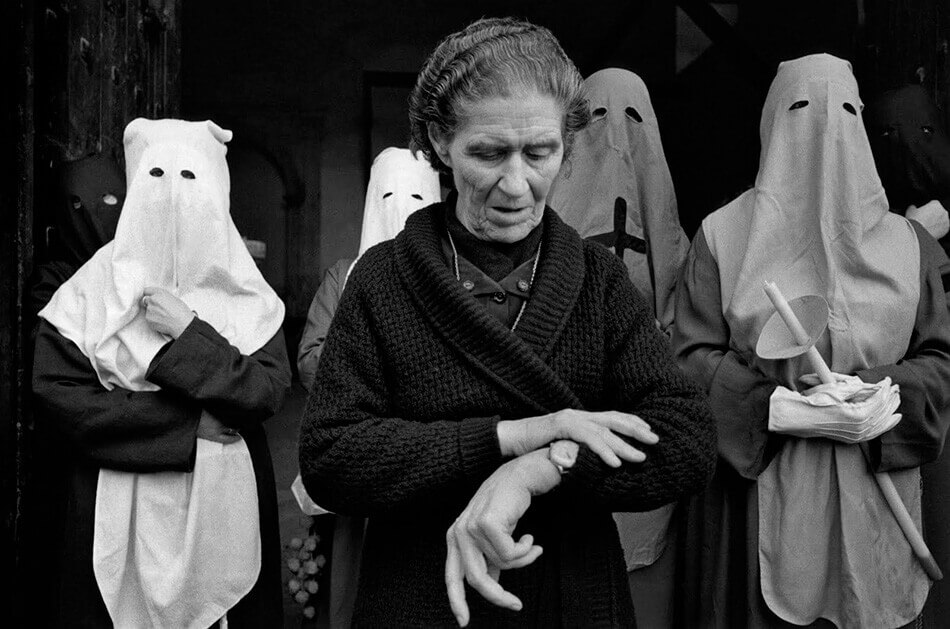
Undoubtedly, the photography catalogue of España Oculta is one of the starkest and most piercing photographic reports on our country ever made. A reality that shocks, that even seems dystopian, simply captured from the traditional festivals and Spanish folklore of the end of the century and that is difficult to recognise and even accept, despite the fact that some of these customs are still in force today and not only in the most remote villages of our country.
Essential.
7# Fullmoon by Darren Almond
One of my recent acquisitions has been the photography catalogue Fullmoon, also published by Taschen, by the British multidisciplinary artist Darren Almond. This photographer was a total stranger to me until I discovered his work on the Internet a little less than 3 years ago.
At the time, I was pushing back the daisy with regard to the print publication of my own photographic project, Quadratures Mínimes. Quadratures Mínimes when I found in Almond’s images a clear connection with my conception of space and landscape applied to those photographs I had been shooting over the years, outside my professional work.
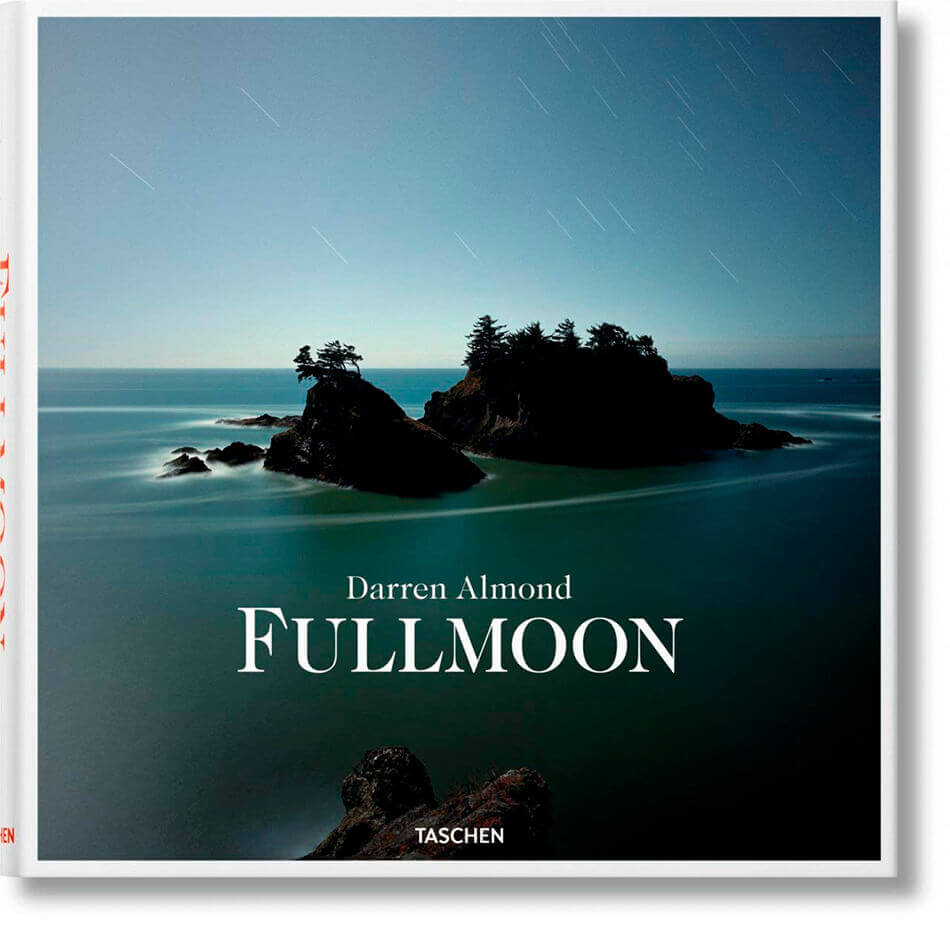
Photographs under the moonlight
Fullmoon is a fascinating collection of photographs taken with the full moon as the only source of light. The result, halfway between reverie and abstraction, turns the photographed landscape into something from a world different from our own. Unreal and inhospitable, the result of the technique of photographing with long exposure times (15 minutes or more) that allows us to discover what the human eye cannot distinguish with the naked eye in such extreme light conditions.
Undoubtedly, Fullmoon is an interesting experiment that offers us a particular vision of landscape photography, far removed from the canons of a postcard image. That landscape, in the hands of Darren Almond, is nothing more than the means to capture in his images atmospheres and environments that, despite being captured in real natural spaces, transcend beyond that reality and are shown as if they had been extracted from a world parallel to ours… Similar, but not the same.
This 400-page catalogue, beautifully laid out and printed, is now available for around €50 online in 30 x 30 cm format.
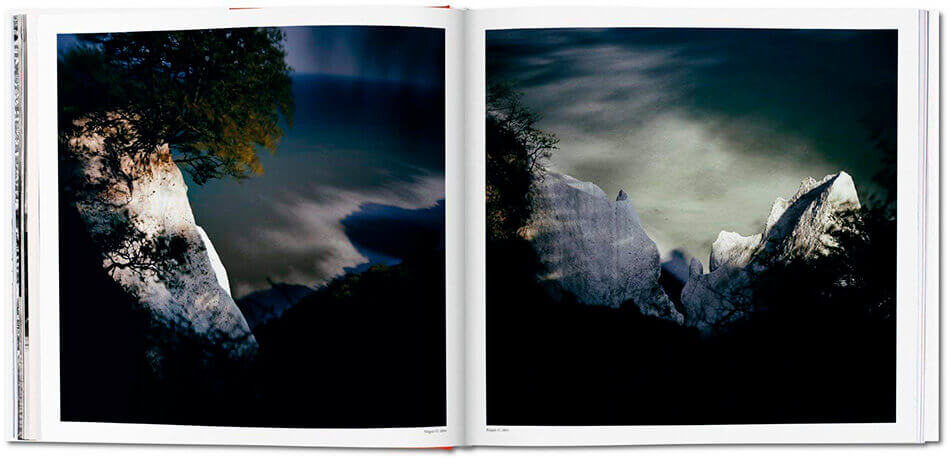
8# Expanding Universe. The Hubble Space Telescope
And to finish with this compilation of photography catalogues, we jump from the earthly to beyond the confines of the universe. Because we cannot ignore a field of photography that has been gaining in popularity in recent years. Thanks to technological advances in digital cameras, which have undoubtedly provided us with some of the most spectacular and beautiful images of the Milky Way captured from Earth. I am talking about astrophotography.
The Hubble Space Telescope
We cannot talk about astrophotography without giving to Caesar what belongs to Caesar. Because it would be impossible to understand the magnitude and relevance of what this photographic field represents without passing through the historical and scientific milestone of the launch of the Hubble space telescope into orbit. The “star king” of modern astrophotography.
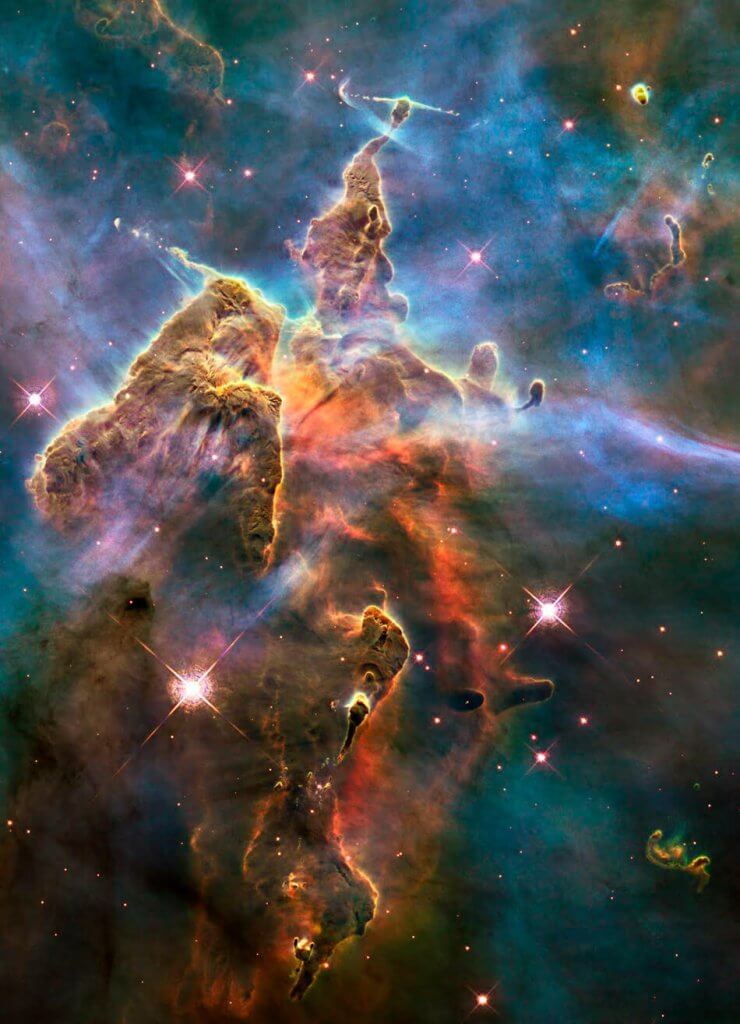
Before Hubble, the only way to image the universe was through ground-based telescopes. These were often affected by weather elements and even light pollution. In addition, our atmosphere absorbs electromagnetic radiation in the infrared wavelength, greatly affecting the quality of the images and making it impossible to capture some spectra.
Having a telescope in orbit, unaffected by the distortions of the light coming from space due to the Earth’s atmosphere, was something that the German rocket expert Hermann Oberth had in mind as early as the 1920s. Of course, it took many years for technology to make it possible to build such a device. And it was not until 1977 that the US Congress approved the project, thanks to the impetus given to it by the American physicist Lyman Spitzer.
Scheduled for launch in 1983, Hubble had to wait a few more years due to various delays. And above all due to the consequences of the Challenger space shuttle accident in 1986, which disintegrated in mid-air shortly after take-off, killing its seven crew members. It was finally in 1990 that the great space telescope was put into orbit after the initial budget for the project had tripled.
NASA’s persistence
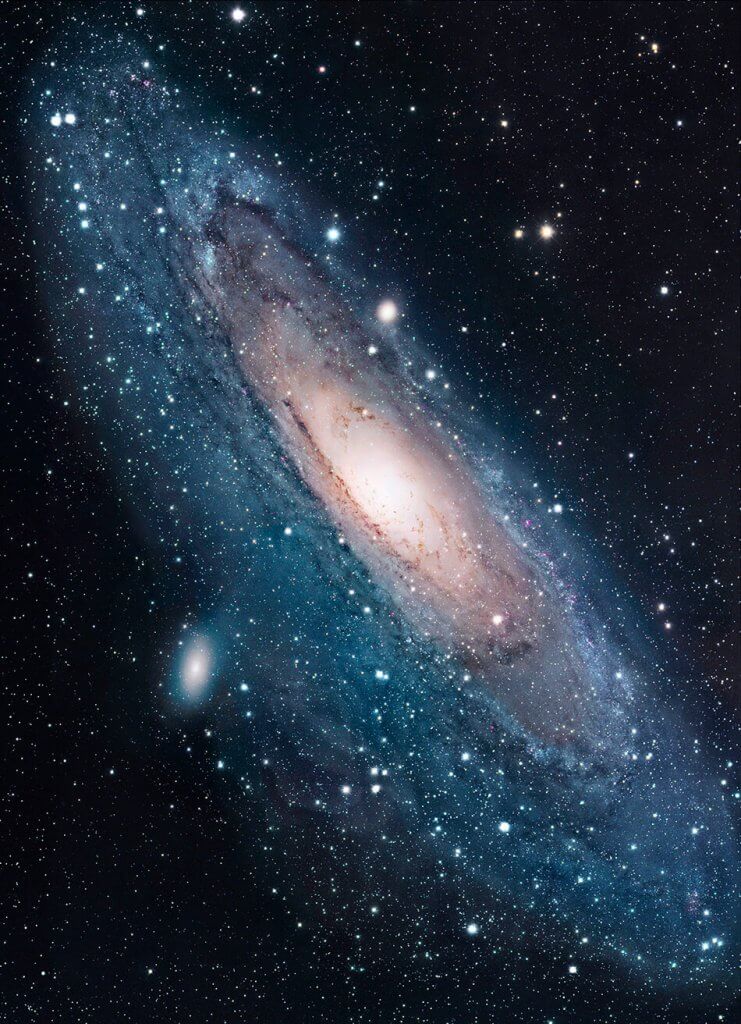
But it still had to pass the acid test, which was to know its true capacity to fulfil the purpose for which it had been built. To see the universe from a perspective never seen before. And it was with the reception of the first images that astronomers came face to face with the harsh reality. The images captured by Hubble were not sharp, as they showed an unforeseen blur due to a defect in the polishing of the main mirror.
But NASA scientists did not give up, and taking advantage of the fact that Hubble had been prepared to be manipulated in space via a space shuttle, they worked for two years to solve the problem.
Finally, in 1993, the first of the five manned missions that have been necessary during the 30-year life of one of the most impressive photographic mechanisms ever built by mankind took place. That 1993 mission to repair Hubble’s main mirror offered us one of the most iconic postcards of the space adventure. That of the shuttle Endeavor astronauts floating through space while repairing the telescope.

And it is from that moment on, with Hubble wearing its particular “glasses” to correct our eyesight, that the innermost universe begins to be discovered in all its enormous splendour, with shocking clarity and proximity. Completely changing the meaning of our existence and of our (minuscule) condition as human beings before that infinite immensity.
The human eye only captures part of the light spectrum
But Hubble’s photographic milestone goes much further and is even more disturbing if we stop to think about how the wavelengths of light work.
The human eye captures a part of the spectrum of light, what we call the visible spectrum, which travels through space at a speed of 300,000 kilometres per second. This means that if the sun is 150 million kilometres away from the Earth, the light from the star that reaches us is the light that has been produced 8 minutes and 20 seconds before we see it, which is the time it takes for the light to travel the distance that separates us from the sun.
Well, if we transfer this to the firmament, when we contemplate the stars at night, we find the paradox that the light that reaches us from them is not the current light, but that we see the light emitted in the state in which those stars were years ago.
For example, the nearest star to our solar system is Proxima Centauri and it is 4.22 light years away. What does this mean? It means that the light we see from Earth from Proxima Centauri is the light that was produced 4.22 years ago and not the light it is currently giving off.
Hubble can capture infrared light
Let’s translate this to Hubble, which not only works in our visible spectrum. It can also capture light outside the visible spectrum, in particular infrared light. This fact allows it to capture objects in the universe in, so to speak, “dark” areas.
As Hubble’s vision reaches out into the far reaches of space, it is not only telling us what it looks like, but it is also calculating how old it really is. For the more distant the object it captures, the closer it is to the light at the beginning of the universe.
The event that completely changed our existence took place between 3 September 2003 and 16 January 2004, when Hubble pointed at a small area of space and captured in the visible light spectrum the deepest image ever taken of the universe. This was called the Hubble Ultra Deep Field.
The result is an image from a very small portion of the universe in which a variety of galaxies in different sizes, shapes and colours can be seen. It is estimated that the light from these galaxies captured by Hubble was emitted more than 13 billion years ago, only 800 million years from the estimated birth of the universe, known as the Big Bang.

Seen from the photography side
From a photographic point of view, don’t tell me that all this is not overwhelming? Well, relatively recently, thanks to Taschen, the photography catalogue Expanding Universe. The Hubble Space Telescope on the occasion of the 30th anniversary of the launch of the Hubble Space Telescope into orbit. And at a very interesting price (30 €) considering the quality of this publisher and the fact that we are talking about a catalogue of almost 300 pages with interior fold-outs and in a closed format of 30×30 cm.
A fantastic opportunity to see printed in this fantastic photography catalogue what are undoubtedly the most important photographs in the history of mankind. Not only because of the technological expertise that has made them possible, but above all, because it is the most enlightening visual document of our true human condition… We are simply stardust…

Must-have photography catalogues that can change your vision
These 8 photography catalogues changed the way I look at photography and I hope they will inspire you too, as they still do for me.
Arcadina goes with you
Creativity goes with you, offering you the best service goes with us
Fulfil your dreams and develop your professional career with us. We offer you to create a photography website for free for 14 days so that you can try our platform without any commitment of permanence.
Arcadina is much more than a website, it is business solutions for photographers.
If you have any queries, our Customer Service Team is always ready to help you 24 hours a day, 7 days a week. We listen to you.





